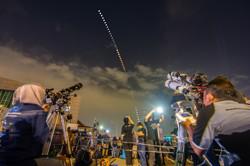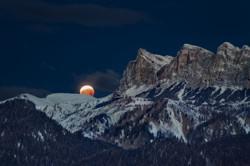Glossary term: Lunar Eclipse
Description: A lunar eclipse occurs when the Moon passes into the shadow of Earth. This can only happen when the Sun, Earth, and Moon are very closely aligned, with Earth directly between the Sun and the Moon. As such, a lunar eclipse can only occur on the night of a full moon. A total lunar eclipse occurs when the Moon is fully within the shadow of Earth. A partial lunar eclipse occurs when the Moon is only partially covered by the shadow of Earth. The type and length of a lunar eclipse depends on the precise location of the Moon in its orbit around Earth at the time of the eclipse.
Related Terms:
See this term in other languages
Term and definition status: This term and its definition have been approved by a research astronomer and a teacher
The OAE Multilingual Glossary is a project of the IAU Office of Astronomy for Education (OAE) in collaboration with the IAU Office of Astronomy Outreach (OAO). The terms and definitions were chosen, written and reviewed by a collective effort from the OAE, the OAE Centers and Nodes, the OAE National Astronomy Education Coordinators (NAECs) and other volunteers. You can find a full list of credits here. All glossary terms and their definitions are released under a Creative Commons CC BY-4.0 license and should be credited to "IAU OAE".
If you notice a factual error in this glossary definition then please get in touch.
Related Media
The Eclipse Between Us, by Muhammad Rayhan, Indonesia
Credit: Muhammad Rayhan/IAU OAE
License: CC-BY-4.0 Creative Commons Attribution 4.0 International (CC BY 4.0) icons
The eclipsed Moon sets near the Rochetta di Prendera, Dolomiti Unesco, by Alessandra Masi, Italy
Credit: Alessandra Masi/IAU OAE
License: CC-BY-4.0 Creative Commons Attribution 4.0 International (CC BY 4.0) icons










